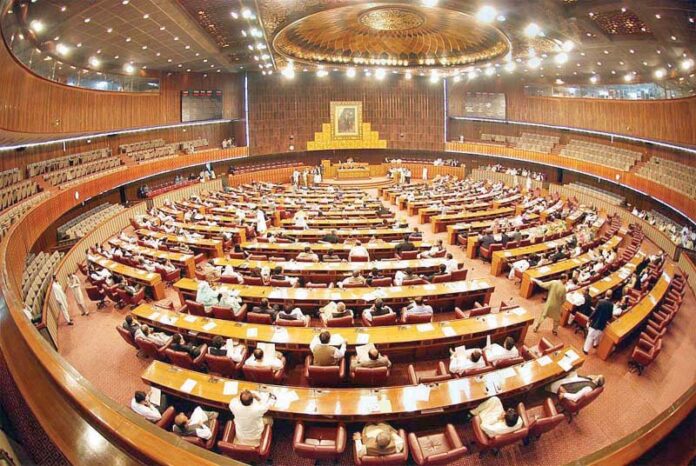While the entire opposition leadership submitted a no-trust motion against Prime Minister Imran Khan with the National Assembly Secretariat on Tuesday, it would be important for readers to understand what happens next.
For a no-confidence motion to be successful, the opposition would require support of a simple majority — 172 of the total 342 members — in the lower house of parliament.
The opposition claims they have the numbers required to oust PM Khan. Former prime minister Abbasi said that to reach the number of 172, a total of 162 members would be provided by opposition parties and one by the Jamaat-i-Islami. He added that two members of the ruling party were “openly against’ it, leaving a gap of seven votes.
“The numbers we have are […] much more than that,” he said.
Process of a no-trust vote
For a vote of no-confidence against the prime minister, 20 per cent of the total MNAs, which means 68 members, have to sign a requisition request for a session of the National Assembly during which the motion will be voted on.
According to Article 54 of the Constitution, the NA speaker has a maximum of 14 days to summon a session of the house following the requisition.
After the session has been called, the NA secretary will circulate the notice to members and the resolution of a vote of no-confidence will be moved on the next working day.
From the day the resolution is moved, it “shall not be voted upon before the expiry of three days, or later than seven days,” according to the rules of procedure.
A vote of no-confidence against the prime minister is conducted by an open vote by division.
When the session takes place, bells will be rung to inform any parliamentarians that may be outside the assembly hall to come inside, and then the gates are closed.
Those who are for the motion exit from one gate and those against the motion exit from another gate. As they exit, the count begins. Once the hall is emptied, the counting is completed and everyone re-enters the hall.
Afterwards, the speaker announces the result. If the vote of no-confidence is successful, the speaker submits the result to the president in writing and the secretary issues a notification to be gazetted.






















